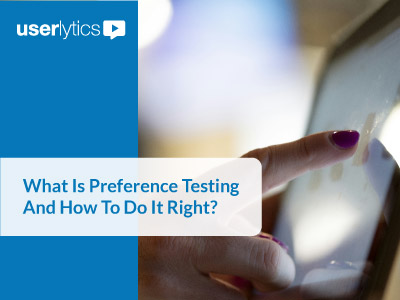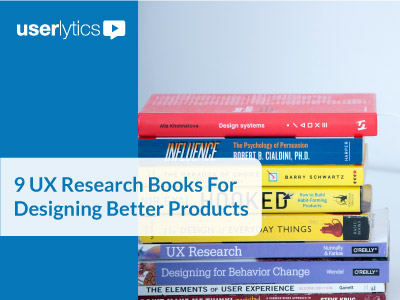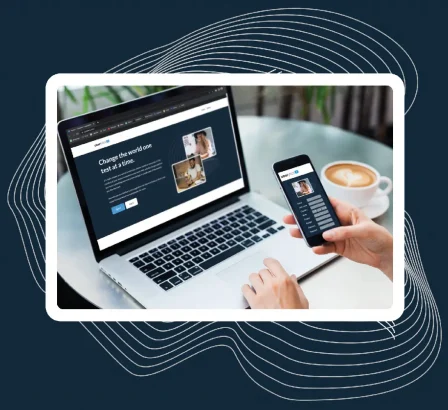AB Testing UX
As businesses strive to stand out in competitive markets, their success hinges upon understanding and catering to the needs of their users. After all, an exceptional user experience not only fosters customer loyalty but also drives conversions and ultimately boosts the bottom line.
Enter A/B testing—an ingenious methodology that empowers UX designers, product managers, and marketers to unlock the secrets to creating truly user-centric experiences in usability testing.
By pitting two variations of a design against each other and analyzing real user behavior, A/B testing allows teams to make data-driven decisions that optimize their digital products or services.
In this article, we embark on an exciting journey into the world of A/B testing, exploring its profound impact on UX design and user interface, and why it has become an indispensable tool in the arsenal of successful businesses.
From demystifying the concept of A/B testing to unraveling its core benefits and best practices, we delve into the practical aspects that can turn an average UX into an extraordinary one.
What Is A/B Testing

A/B testing, also known as split testing, is a systematic method used to compare only one variable of a digital element, such as a web page, app interface, or email campaign, and compare it with another to determine which one is more user friendly.
This powerful experimentation technique is widely employed in various fields, including user experience (UX) design, digital marketing, and product development.
The basic premise of A/B testing involves creating two distinct variations, A and B, with only one key difference between them. Different elements can be anything from the color of a call-to-action button, the placement of an image, the wording of a headline, or even an entirely different layout.
The objective is to collect quantitative data and understand which version leads to higher engagement, conversions, or desired outcomes among the target audience.
To conduct an A/B test, a controlled experiment is run, where the two versions are randomly shown to separate groups of users. Data on user interactions, behaviors, or conversions are collected and analyzed to measure the performance of each variation.
The test continues until enough data is gathered to establish statistical significance, ensuring that any incremental improvements are not mere chance occurrences.
By employing A/B testing, businesses can make data-driven decisions rather than relying on subjective assumptions or gut feelings. It allows them to optimize their digital assets, refine marketing strategies, and fine-tune user experiences based on real user preferences and behaviors.
Ultimately, A/B testing empowers organizations to continuously iterate and improve their offerings, leading to enhanced customer satisfaction, increased engagement, and improved overall performance.
Why Use A/B Testing in UX

A/B testing offers a wide range of benefits for businesses and organizations seeking to optimize their digital assets —a landing page, for example- improve user experiences, and maximize conversions. Here are some of the key advantages of A/B testing:
- Data-driven decision making
A/B testing provides concrete data and insights on how users interact with different variations of a design or content.
This data-driven approach enables businesses to make informed decisions based on real user behavior rather than relying on assumptions or subjective opinions.
- Improved User Experience (UX)
By testing different design elements, layouts, and user flows, A/B testing helps identify which version resonates best with users, leading to enhanced UX.
Optimizing user experiences can result in higher user engagement, increased satisfaction, and improved customer loyalty.
- Increased conversion rates
Whether the goal is to boost sales, sign-ups, or other key performance indicators, A/B testing can uncover the most effective design or content that leads to higher conversion rates.
Even small improvements can have a significant impact on overall business success.
- Reduced bounce rates
A/B testing allows businesses to address potential pain points or confusion in their digital assets that may cause users to leave prematurely.
Optimizing the user journey can help reduce bounce rates and increase the time users spend on the website or app.
- Cost-effective optimization
A/B testing enables businesses to test multiple variations simultaneously, making it a cost-effective method for optimizing designs and marketing strategies.
Instead of investing in a single unproven approach, resources are allocated to the most successful version.
- Faster iteration and improvement
A/B testing facilitates a continuous improvement process by quickly identifying winning variations. Organizations can iteratively refine their digital assets, responding promptly to changing user preferences and market trends.
- Mitigation of risk
When introducing new features or design changes, A/B testing allows businesses to assess potential risks and benefits before implementing them site-wide.
This reduces the chances of costly mistakes and ensures the best possible user experience.
- Enhanced personalization
A/B testing can be used to test personalized content and experiences for different user segments, tailoring the offerings to specific preferences and needs. Personalization can drive higher engagement and conversion rates.
- Competitor insights
A/B testing enables businesses to benchmark their performance against competitors by analyzing their strategies and identifying successful tactics.
- Quantifiable results for stakeholders
A/B testing provides clear, quantifiable results that can be easily communicated to stakeholders, clients, or team members. This makes it easier to justify design decisions and gain buy-in for future optimizations.
What is Targeted A/B Testing

Targeted A/B testing, also known as segmented or personalized A/B testing, is a variation of the traditional A/B testing methodology that focuses on comparing different design variations or content specifically for different segments of users.
Instead of conducting a single A/B test across the entire user base, targeted A/B testing involves running multiple A/B tests simultaneously for different user groups, each with its unique set of variations tailored to their specific characteristics, preferences, or behaviors.
The main objective of targeted A/B testing is to optimize the user experience for various segments, ensuring that each group receives content or design variations that are most relevant and appealing to them. By delivering personalized experiences to different user segments, businesses can enhance engagement, conversion rates, and overall user satisfaction.
Here’s how targeted A/B testing works:
- User Segmentation: The first step is to segment the user base into distinct groups based on specific criteria, such as demographics, past behavior, geographic location, or any other relevant attributes. These segments should be significant enough to produce meaningful data.
- Variations for Each Segment: For each user segment, different variations of the design or content are created to cater to their specific preferences or needs. These variations can range from subtle changes to significant differences in design elements or user flows.
- Simultaneous Testing: Each segment is exposed to its corresponding variations simultaneously, and their interactions and behaviors are measured and compared. This means that multiple A/B tests are running concurrently for different user segments.
- Analyzing Results: The data collected from each segment’s A/B test is analyzed separately to understand how each variation performed within its targeted group. The analysis focuses on key metrics and user behavior to determine which variations were most effective for each segment.
- Implementation and Iteration: Based on the results, the winning variations for each segment are implemented site-wide, providing users with personalized experiences. The process is iterative, allowing for continuous optimization as user preferences or behaviors evolve over time.
AB Testing UX AB Testing UX
How to do A/B Testing in UX

A/B testing in UX involves a structured and systematic approach to comparing different design variations to optimize the user experience. Here’s a step-by-step guide on how to conduct A/B testing in UX:
- Define Clear Objectives: Start by setting clear and measurable objectives for your A/B test. Identify specific key performance indicators (KPIs) you want to improve, such as click-through rates, conversion rates, time on page, or bounce rates. These objectives will guide the rest of the testing process.
- Identify Testable Elements: Determine which elements of your UX you want to test. This could include changes to the layout, color schemes, call-to-action buttons, images, headlines, or any other elements that can impact user behavior.
- Create Variations: Develop alternative versions (variations) of the UX element you want to test. For example, if you’re testing a call-to-action button, create two or more versions with different colors, sizes, or text.
- Randomly Divide Users: Randomly divide your user base into groups, ensuring that each group is large enough to produce statistically significant results. Assign each group to one of the variations (e.g., Group A sees Variation 1, Group B sees Variation 2).
- Implement the Test: Integrate the different variations into your UX design and launch the A/B test. This can be done through specialized A/B testing tools, which often offer features for randomizing users and tracking performance metrics.
- Collect Data: Allow the A/B test to run for a sufficient period to gather enough data for statistical significance. The duration may vary based on the traffic and number of conversions on your platform.
- Analyze Results: Once the test is complete, analyze the data to evaluate the performance of each variation against the established KPIs. Look for statistically significant differences in user behavior between the variations.
- Draw Conclusions: Based on the results, draw conclusions about which variation performed better and whether it aligns with your objectives. Consider not only quantitative data but also qualitative feedback and user insights.
- Implement the Winning Variation: Apply the winning variation from the A/B test to your UX design. This could involve rolling out the change site-wide or for specific user segments, depending on the test’s scope.
- Iterate and Optimize: A/B testing is an iterative process. Continuously test new variations to further optimize your UX design and refine user experiences based on real user feedback.
- Monitor Long-Term Impact: Keep track of the long-term impact of the implemented changes on the selected KPIs. Ensure that the improvements are sustained and identify any new areas for optimization.
AB Testing UX AB Testing UX
FAQs
What tools can I use for applying A/B testing in user testing/user research?
There are several excellent tools available for applying A/B testing in user testing websites and user research. These tools provide user-friendly interfaces, powerful analytics, and data visualization features to help you run effective A/B tests. Here are some popular A/B testing tools used in the industry:
- Optimizely: Optimizely is a widely used A/B testing platform that offers a user-friendly visual editor for creating variations and targeting specific user segments. It provides robust analytics and integrations with various third-party tools.
- Google Optimize: Google Optimize is a free A/B testing and personalization tool that seamlessly integrates with Google Analytics. It allows you to conduct A/B tests and track the performance of different variations.
- VWO (Visual Website Optimizer): VWO is a comprehensive A/B testing tool that also includes features for split URL testing, multivariate testing, and heatmaps. Its intuitive interface makes it easy to set up experiments and analyze results.
- Crazy Egg: Crazy Egg specializes in heatmap and scrollmap visualizations, allowing you to understand how users interact with your website. It also offers A/B testing capabilities to optimize specific elements based on user behavior.
- Adobe Target: Adobe Target is part of the Adobe Experience Cloud suite and offers advanced A/B testing, multivariate testing, and personalization capabilities. It’s suitable for enterprise-level users and integrates well with other Adobe products.
- Mixpanel: While primarily known as an analytics tool, Mixpanel also offers A/B testing functionality. It allows you to track user behavior and set up A/B tests based on specific events or actions.
- AB Tasty: AB Tasty is an all-in-one conversion optimization platform that includes A/B testing, split testing, and personalization features. It provides a wide range of targeting options and analytics to optimize user experiences.
- SplitMetrics: Primarily focused on mobile app A/B testing, SplitMetrics allows you to optimize app store pages, screenshots, and app icons to increase app conversions and downloads.
- Convert.com: It offers A/B testing, multivariate testing, and personalization capabilities. It provides detailed reports and segment-specific analyses to make data-driven decisions.
- Leanplum: Leanplum is a mobile-focused A/B testing and personalization platform. It enables you to create personalized experiences for mobile app users to enhance engagement and retention.
AB Testing UX AB Testing UX
Conclusion – Key Takeaways
In conclusion, the integration of A/B testing in UX research has emerged as a game-changing methodology, revolutionizing the way businesses approach user experience optimization. By leveraging data-driven experimentation, A/B testing empowers UX designers, product managers, and marketers to make informed decisions, leading to exceptional digital experiences that resonate deeply with their target audience.
Through A/B testing, design assumptions are replaced with evidence-backed insights, allowing teams to shed light on what truly works for users. This iterative approach fosters continuous improvement, enabling organizations to stay agile and adaptive in an ever-changing digital landscape.
Interested in UX Testing?
About the Author: Nicholas Aramouni

Nicholas Aramouni is a Senior UX Researcher and Communications Manager who has developed his qualitative and quantitative knowledge by working within a variety of industries, including music entertainment, media, technology and education. Across his career, Nick has conducted numerous international studies in countries all around the globe, placing importance on developing international partnerships as a means of better understanding the various cultures and markets that push UX researchers further. Nicholas has enhanced his involvement in UX by also working as a marketing content strategist and speaker in the field. He has proudly completed a B.A in Policy Studies, a minor in Business Innovation and a B.A in Education.
Read More Articles by Nicholas



